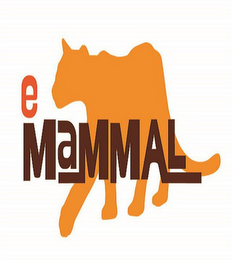Study Design Recommendation for a Country
Study Design > Country
Large scale camera trapping could provide important information for the conservation of wildlife at a national level, but has never been attempted. Furthermore, such an effort could raise the profile of conservation across the country by involving students and citizens in the work, and by widely sharing the pictures. In particular, we think this approach could be useful to census jaguars, a large cat with unique spots that allow their numbers to be estimated with great precision because each animal can be recognized individually. Here we offer some suggestions as to how this might be done.
Focusing on jaguars sets the spatial scale of sampling such that there are no 'holes' in the study design where jaguars could hide and not have any chance of being photographed. In practice, this is accomplished by creating a grid across a study area and placing at least one camera within each grid cell. The size of this grid is set by the home range of the target species, with 2x2km grid typically recommended for jaguars. After laying such a grid across Panama and removing the areas obviously not suitable for jaguars (off-shore islands & non-forest habitat) we end up with 2800 forested grid cells that might have jaguars, and should be surveyed with camera traps.
Because we are seeking to identify individual jaguars we need to set paired camera traps to get photographs of both sides of an animal at once, preferably set along a trail, game trail, or dirt road, which jaguars are known to use preferentially over off-trail sites. Therefore, we suggest one pair of camera traps be set along a forested trail inside each 2x2 km grid cell for 1-month deployments. This study design would also provide useful information on the distribution and relative abundance of other wildlife including other predators, tapirs, anteaters etc… which could be analyzed in an occupancy framework. The large amount of photos could be managed by eMammal, with jaguar spot identification automated through the Image Based Ecological Information System.

Figure 1. A map of likely jaguar habitat (green) in Panama that should be surveyed with camera traps. Purple shows marginal habitat.
Volunteer recruitment
Running camera traps at xx locations is a huge task and would require careful coordination of scientist and citizen scientists who would run the cameras in the field. However, there are already a large number of scientists running cameras in various regions of the country that would need to work together in a coordinated way to accomplish this goal. Panamanian citizen scientists could be recruited to run cameras on private land, while adventurous ecotourists could be trained and challenged to help run the more remote sites, in addition to professional scientific expeditions.
Products
A country wide camera trap survey at this scale would produce an unprecedented map of the wildlife resources, with real population estimates for jaguars and relative abundance estimates for other species. Furthermore, spatial analysis of these patterns would show what environmental factors are affecting each species, highlighting the most pressing conservation concerns for each region. Finally, the photographs and videos from this work would greatly raise the profile of wildlife conservation in the country.
Costs
We have not estimated the details of what such an enterprise would cost, but suggest it could be accomplished as a 5-year project.
Discussion
We would love to hear your thoughts and questions on this advice! Please contact us at emammal@si.edu.


